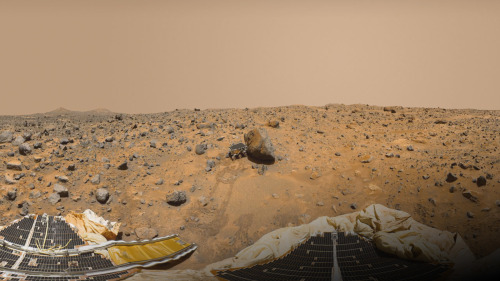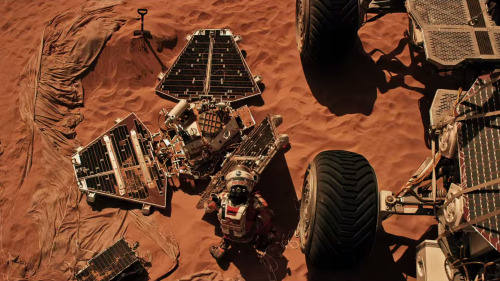Intergalacticnerd - Space N Shit

More Posts from Intergalacticnerd and Others
Are u really in space
Yes. Really. And now I am in space over New Orleans…and now I’m over Mobile, Alabama.

Infant Star’s Artistic Outburst
The artistic outburst of an extremely young star, in the earliest phase of formation, is captured in this spectacular image from the NASA/ESA Hubble Space Telescope. The colourful wisps, found in the lower left of the image, are painted onto the sky by a young star cocooned in the partially illuminated cloud of obscuring dust seen to the upper right.
Pictured punching through the enshrouding dust is an extremely hot, blue jet of gas released by the young star. As this jet speeds through space, it collides with cooler surrounding material. The result is the colourful object to the lower left, produced as the cooler material is heated by the jet (opo9524a, potw1307a).
This wispy object is known as HH34 and it is an example of a Herbig–Haro (HH) object. It resides approximately 1400 light-years away near the Orion Nebula, a large star formation region within the Milky Way. HH objects exist for a cosmically brief time — typically thousands of years — with changes seen in observations taken only a few years apart (heic1113).
Credit: ESA/Hubble & NASA

Answer Time from Space!
I’m on day 321 of my #YearInSpace, and today I surpassed 500 days in space total. Let’s chat! Sat., Feb. 13 at 1:45 p.m. ET.

Gravitational Waves Exist: The Inside Story of How Scientists Finally Found Them
How a group of scientists proved Einstein right—and expanded our view of the universe.


Mars Pathfinder & Sojourner Rover (360 View) Explained
Thanks to new technology, we can take a 360-degree tour of the 1997 Pathfinder mission landing site, including Sojourner, the first Mars rover. Check out this interactive YouTube panorama, and then…
…keep scrolling to find out more about each point of interest, how the Pathfinder mission compares to “The Martian” and NASA’s real Journey to Mars.

Yogi
“Yogi” is a meter-size rock about 5 meters northwest of the Mars Pathfinder lander and the second rock visited by the Sojourner Rover’s alpha proton X-ray spectrometer (APXS) instrument. This mosaic shows super resolution techniques applied to help to address questions about the texture of this rock and what it might tell us about how it came to be.

Twin Peaks
The Twin Peaks are modest-size hills to the southwest of the Mars Pathfinder landing site. They were discovered on the first panoramas taken by the IMP camera on the July 4, 1997, and subsequently identified in Viking Orbiter images taken over 20 years ago. They’re about 30-35 meters tall.

Barnacle Bill
“Barnacle Bill” is a small rock immediately west-northwest of the Mars Pathfinder lander and was the first rock visited by the Sojourner Rover’s alpha proton X-ray spectrometer (APXS) instrument. If you have some old-school red-cyan glasses, put them on and see this pic in eye-popping 3-D.

Rock Garden
The Rock Garden is a cluster of large, angular rocks tilted in a downstream direction from ancient floods on Mars. The rocky surface is comprised of materials washed down from the highlands and deposited in this ancient outflow channel.

MOAR INFO
Pathfinder Lander & Sojourner Rover
Mission Facts [PDF]
Science Results
Rock & Soil Types


This vista was stitched together from many images taken in 1997 by Pathfinder.

Pathfinder and Sojourner figure into Mark Watney’s quest for survival on the Red Planet in the book and movie, “The Martian.” See JPL’s role in making “The Martian” a reality: http://go.nasa.gov/1McRrXw and discover nine real NASA technologies depicted in “The Martian”: http://go.nasa.gov/1QiyUiC.

So what about the real-life “Journey to Mars”? NASA is developing the capabilities needed to send humans to Mars in the 2030s. Discover more at http://nasa.gov/journeytomars and don’t forget to visit me when you make it to the Red Planet. Until then, stay curious and I’ll see you online.








“We used to look up at the sky and wonder at our place in the stars. Now we just look down, and worry about our place in the dirt.”

This new NASA/ESA Hubble Space Telescope image shows three of Jupiter’s largest moons parade (seems the perfect word for it) across the giant gas planet. This happens only once or twice every 10 years.
Here’s a more clear view to it:


All Quiet in the Nursery?
The dark patch snaking across this spectacular image of a field of stars in the constellation of Ophiuchus (The Serpent-bearer) is not quite what it appears to be.
Although it looks as if there are no stars here, they are hidden behind this dense cloud of dust that blocks out their light. This particular dark cloud is known as LDN 1768.
Despite their rather dull appearance, dark nebulae like LDN 1768 are of huge interest to astronomers, as it is here that new stars form. Inside these vast stellar nurseries there are protostars — stars at the earliest stage of their lives, still coalescing out of the gas and dust in the cloud.
Eventually, the protostars will become dense and hot enough to start the nuclear reactions that will produce visible light and they will start to shine. When this happens, they will blow away the cocoon of dust surrounding them and cause any remaining gas to emit light as well, creating the spectacular light show known as an HII region.
Credit: ESO
Cassini Top 10 Images and Science Results of 2015
As our Cassini spacecraft enters its final 20 months before its plunge into Saturn, the mission’s science team has selected their top 10 images from 2015 (above), a year of historic discoveries, as well as the top science results (below). Take a look:
1. First Deep Seafloor Hydrothermal Vents Found Beyond Earth

Cassini found the first evidence of active hot-water chemistry beyond planet Earth. An extensive, four-year analysis of data from the spacecraft, computer simulations and laboratory experiments led researchers to the conclusion the tiny silica (SiCO2) grains most likely form when hot water containing dissolved minerals from the moon’s rocky interior travels upward, coming into contact with cooler water.
2. Global Ocean Beneath Enceladus’ Surface

A global ocean lies beneath the icy crust of Saturn’s geologically active moon Enceladus. Scientists analyzed more than seven years’ worth of images of Enceladus taken by the spacecraft, which has been orbiting Saturn since mid-2004. As a result, they found Enceladus has a tiny, but measurable wobble as it orbits Saturn. This proves that there must be a global layer of liquid separating the surface from the core.
3. Titan Observed Outside of Saturnian Magnetosphere

During Cassini’s flyby of Titan, the giant moon happened to be on the sunward side of Saturn when a powerful outburst of solar activity reached the planet. The strong surge in the solar wind so compressed the sun-facing side of Saturn’s magnetosphere that the bubble’s outer edge was pushed inside the orbit of Titan. This left the moon exposed to, and unprotected from, the raging stream of energetic solar particles. The region of space dominated by Saturn’s magnetic field is called the magnetosphere.
4. Density of a Ring Particles May Indicate Recent Origins

Saturn’s A ring was found to be warmer than expected at the planet’s equinox, and also had an unusually large thermal asymmetry about the equinox. This could be due to the A ring being mostly composed of denser particles made primarily of solid ice, with a thin top layer of fluffy regolith.
5. Titan Southern Polar Ice Cloud

Scientists have detected a monstrous new cloud of frozen compounds in Titan’s low- to mid-stratosphere – a stable atmospheric region above the troposphere, or active weather layer.
6. Curtain Vents on Enceladus?

New research using data from Cassini suggests most of the eruptions from Saturn’s moon Enceladus might actually be diffuse curtains rather than discrete jets. Many features that appear to be individuals jets of material erupting along the length of prominent “tiger stripe” fractures in the moon’s south polar region might be phantoms created by an optical illusion, according to the new study.
7. Discovery of Tethys Red Arcs

Like graffiti sprayed by an unknown artist, unexplained arc-shaped, reddish streaks are visible on the surface of Saturn’s icy moon Tethys. The origin of the features and their reddish color is a mystery to scientists.
8. Saturn’s 30-year Giant Storms Powered by Water Convection

Changes in temperature and the composition of the hydrogen-laden air within the remnants of a giant storm system on Saturn reveal that air was lofted more than 120 miles in altitude from the deeper water condensation levels.
9. Seasonal Change Seen at Saturn’s Poles

Saturn’s polar regions have displayed extreme seasonal changes during Cassini’s decade-long watch, providing the most comprehensive view ever obtained of seasonal change on a giant planet.
10. Huygens Probe Imaging Mosaic of Titan’s Surface and Descent Movie

Ten years ago, an explorer from Earth, the Huygens probe, was released from the Cassini spacecraft and parachuted into the haze of an alien moon toward an uncertain fate. After a gentle descent lasting more than two hours, it landed with a thud on a frigid floodplain on Titan, surrounded by icy cobblestones.
Make sure to follow us on Tumblr for your regular dose of space: http://nasa.tumblr.com
-
 learnorneverrealize1888000888 reblogged this · 1 month ago
learnorneverrealize1888000888 reblogged this · 1 month ago -
 learnorneverrealize1888000888 liked this · 1 month ago
learnorneverrealize1888000888 liked this · 1 month ago -
 finndiseicla reblogged this · 6 months ago
finndiseicla reblogged this · 6 months ago -
 dinahjane97 liked this · 1 year ago
dinahjane97 liked this · 1 year ago -
 bookaddictsguide liked this · 1 year ago
bookaddictsguide liked this · 1 year ago -
 s-n-i-p-u-r-r liked this · 1 year ago
s-n-i-p-u-r-r liked this · 1 year ago -
 tomicaleto reblogged this · 1 year ago
tomicaleto reblogged this · 1 year ago -
 tomicaleto liked this · 2 years ago
tomicaleto liked this · 2 years ago -
 dogboydeathgrips liked this · 2 years ago
dogboydeathgrips liked this · 2 years ago -
 seltzer-enjoyer liked this · 2 years ago
seltzer-enjoyer liked this · 2 years ago -
 annoyinglyoriginalchaos reblogged this · 2 years ago
annoyinglyoriginalchaos reblogged this · 2 years ago -
 annoyinglyoriginalchaos liked this · 2 years ago
annoyinglyoriginalchaos liked this · 2 years ago -
 insomniparty liked this · 2 years ago
insomniparty liked this · 2 years ago -
 ants-n-cheese reblogged this · 2 years ago
ants-n-cheese reblogged this · 2 years ago -
 ants-n-cheese liked this · 2 years ago
ants-n-cheese liked this · 2 years ago -
 seddenostalgia reblogged this · 2 years ago
seddenostalgia reblogged this · 2 years ago -
 butchaxemurderer liked this · 2 years ago
butchaxemurderer liked this · 2 years ago -
 weirdnoisen liked this · 2 years ago
weirdnoisen liked this · 2 years ago -
 bnuuy222 reblogged this · 2 years ago
bnuuy222 reblogged this · 2 years ago -
 veocorazones reblogged this · 2 years ago
veocorazones reblogged this · 2 years ago -
 againagainagai reblogged this · 2 years ago
againagainagai reblogged this · 2 years ago -
 againagainagai liked this · 2 years ago
againagainagai liked this · 2 years ago -
 extravagantlechuzon reblogged this · 2 years ago
extravagantlechuzon reblogged this · 2 years ago -
 m-e-w-666 liked this · 2 years ago
m-e-w-666 liked this · 2 years ago -
 sketchdeath reblogged this · 2 years ago
sketchdeath reblogged this · 2 years ago -
 jack-a-nape reblogged this · 2 years ago
jack-a-nape reblogged this · 2 years ago -
 aas-eg liked this · 2 years ago
aas-eg liked this · 2 years ago
"Astronomy compels the soul to look upwards and leads us from this world to another." - Plato
147 posts
